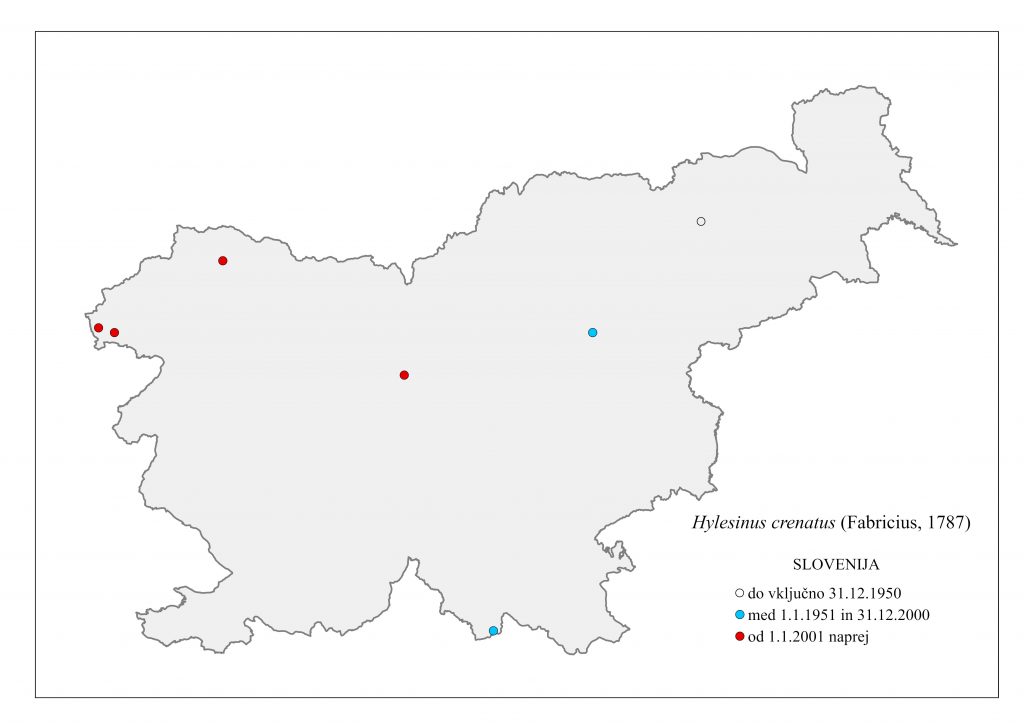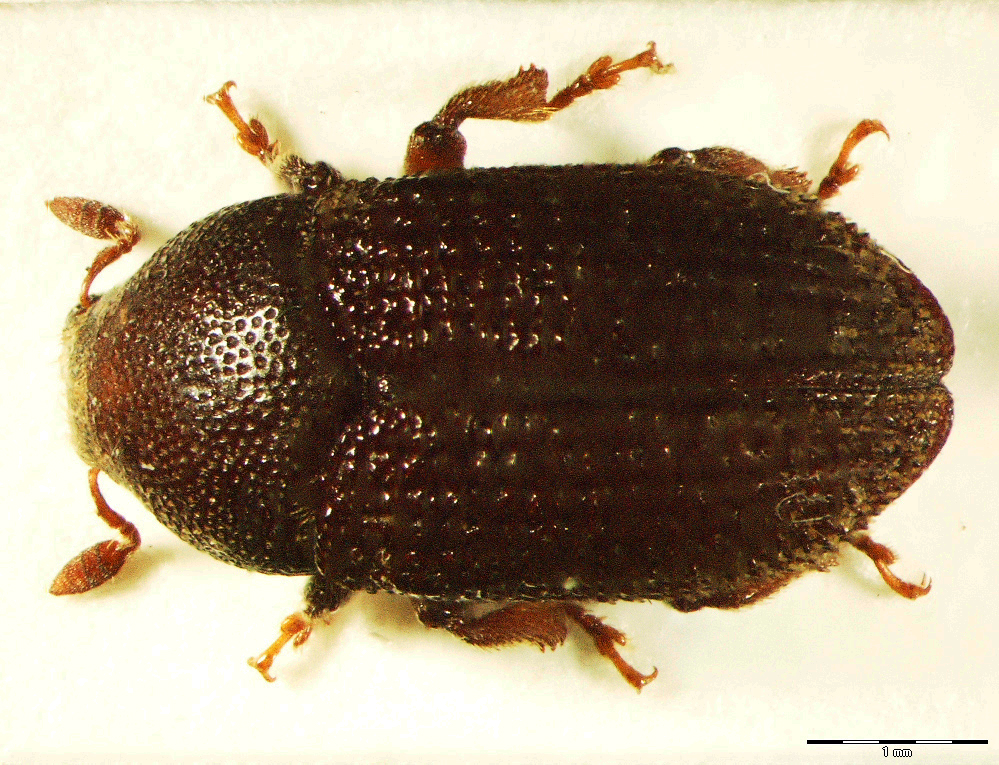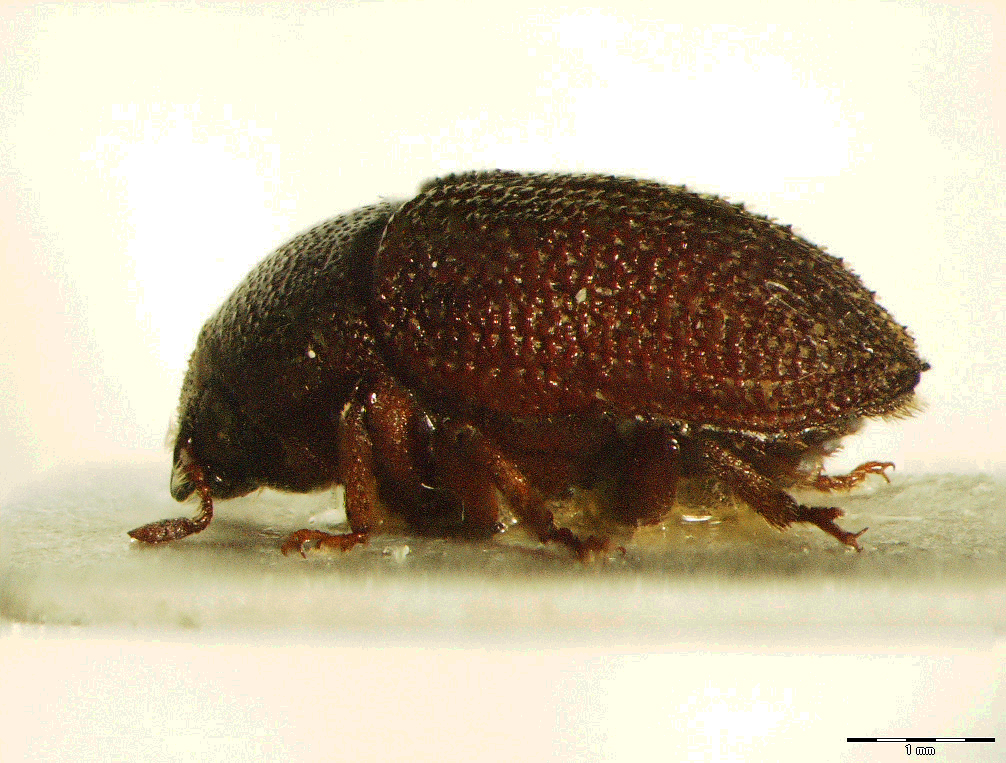04.01. Hylesinus crenatus (Fabricius, 1787)
Presence
E: AU BE BY CR CT CZ DE EN FI FR GB GE GR HU IR IT LA LT LU MC NR NT PL RO SK SL SP SV ST SZ UK YU
N: AG MO
A: KI TR
Figure 24: Hylesinus crenatus, dorsal, lateral (Photo: Maja Jurc)
Older catalogs and keys – citations of name
Grüne 1979: H. crenatus (Fabricius, 1787); Freude, Harde, Lohse 1981: H. crenatus Fabricius; Titovšek 1988: H. crenatus Fabricius; Pfeffer & Knížek 1993: H. crenatus (Fabricius, 1787); Pfeffer 1995: H. crenatus (Fabricius, 1787).

Figure 25: Hylesinus crenatus, distribution map according to historical and recent data
Ecology and presence in Slovenia
The species is distributed in central and southern Europe and other Mediterranean areas such as North Africa (Morocco, Algeria), the Caucasus and Asia Minor. It occurs regionally in Slovenia, but rarely (Figure 25). Hosts include Fraxinus excelsior, F. americana and F. angustifolia. Occasionally it also inhabits Quercus robur, Quercus spp., Juglans nigra, J. regia, Syringa vulgaris, Tilia sp. and Acer sp.. It inhabits mainly thicker ash trunks, in Slovenia it has been recorded only on F. excelsior. Swarms towards the end of April, develops one generation, in years with higher temperatures also two generations. The tunnel system is biramous, transversely oriented, up to 8 cm long. Often the two arms of the maternal gallery are of different lengths, one arm may be missing. The stocky, arched beetle measures 4 to 6 mm in length (Figure 24). A monogamous species, it is relatively rare and has no significant economic role. It is likely to become even rarer in the future due to ash dieback (Hymenoscyphus fraxineus (T. Kowalski) Baral, Queloz & Hosoya 2014).


